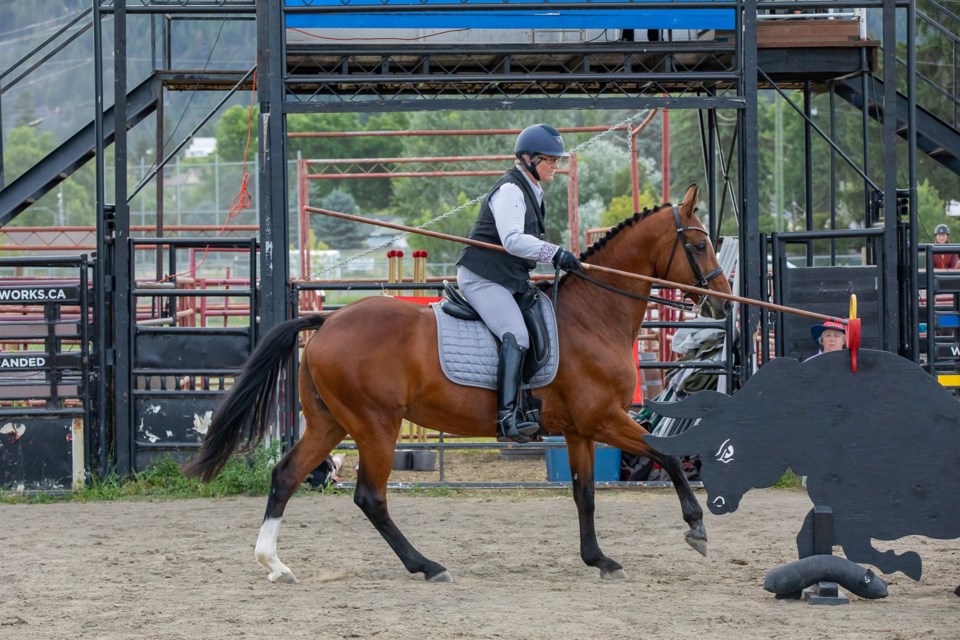A Roberts Creek woman is the first Canadian to qualify for the 2026 Working Equitation World Championships in Spain.
Sarah Bradley was declared as a candidate for the Canadian team about four months ago, but in June she cinched her position with qualifying scores achieved at the Thompson-Okanagan World Association for Working Equitation competition.
“Equestrian sport, it's a lifelong sport. I am nearly 60 years old. I've been a national-level athlete in other equestrian disciplines,” said Bradley, who also serves in the Canadian military as a cadet instructor. She's also been long-listed for the Canadian team in Olympic disciplines. "So I've leaned pretty heavily on that experience as an athlete.”
Despite the fact working equitation has been around since the 1990s, it’s just in recent years this fast-growing equestrian sport has seen its popularity rise globally. Bradley explains the sport is based on the traditional riding styles of Portugal, Spain, France and Italy, which were used to showcase the ability of horses working on livestock farms.
“It started out predominantly as men getting together and showing off the history and culture and capabilities of their working animals,” says Bradley. “So, if you think about rodeo and the connection between cattle handling in North America and the quarter horse, right? This is the European equivalent. It draws from bull fighting as well. So, you know, they're working horses. And, they handle their cattle very differently in those countries than we do here in North America.”
She added, competitions are made up of three or four trials, including dressage, during which riders perform to music as a way to showcase precision, balance and communication with the horse.
The second trial is ease of handling, which includes an obstacle course that typically asks the rider to open a gate while on the horse, walk over a bridge, ride a figure eight or cloverleaf pattern around barrels, and more. Bradley said if the obstacles prove to be too daunting for the horse, the rider can choose to not compete in that trial with no penalty. Of course, if another rider and horse do complete the obstacles, they will score higher marks.
The speed trial sees horse and rider complete the obstacle course but at an accelerated speed. The cattle trial, testing real-world ranching skills, is also optional.
It was a friend offering clinics in the sport who encouraged Bradley to give it a try. She did and the rest, as they say, is history. Well, history to the point she is the first Canadian rider to qualify for the world championships in Spain.
She notes, there’s still a lot of work to be done before she and Audrey (Hepburn) head to Spain. Bradley wants to raise her qualifying score significantly, something she is confident will happen at two upcoming competitions, one in California and another in Oregon State, in early 2026. Should Bradley not be able to raise enough money to take Audrey, she will have the option of riding a European horse, though she has some concerns about competing on an animal she’s never ridden before.
“So, I’m going to spend the next year training, including a couple of trips to work with the best in the world in Europe, just myself, not taking a horse, but just to go and watch and learn and ride the horses that are there,” she said. “And then the next component is to figure out the funding etc, to get my horse to Spain, if the Canadian team determines that that's an appropriate thing to do.”
Bradley says it will cost about $60,000 to achieve her goal of representing Canada in Spain. She adds, most sports and equestrian-related funding in Canada is dedicated to the Olympics.
Meanwhile, a friend has launched a GoFundMe to help Bradley achieve her dream for Canada.
You can read more about Bradley’s quest and GoFund Me, here.



